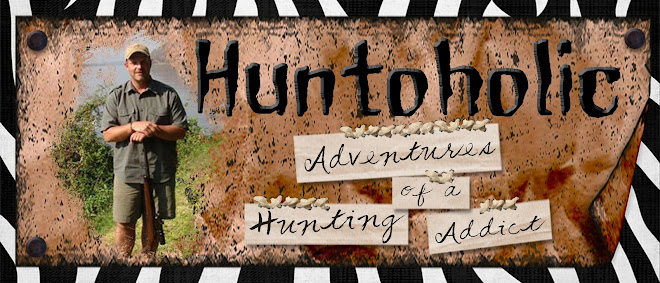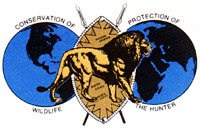
When neither Byron or I are lucky enough to draw Nevada big game tags ourselves, we are more than happy to sign on to assist the more fortunate applicants in hunting their big game. Over the past several years we've had no difficulty finding willing successful elk applicants who want some inside information in finding elk. Since 2003 we've hunted areas 22 and 23 almost every year, and in the process have gained some valuable education about those areas and their hot spots.
In 2007 we were fortunate to have three separate acquaintances who drew area 22 elk tags. One was Jed Topham, a Henderson veterinarian from northern Utah, whose father and brother were and are Utah Division conservation officers. His father, Jack Topham, was with me when I shot my 2008 antelope in Utah. The second was the wife of a buddy, John Hymas, Becky Hymas. The final was Mike O'neal, who is good friends with Tracy Truman.
Jed, Jack and Jed's brother, Jay had been hunting in 22 for about a week by the time Slim and I were able to get away from work and get up to their camp near the base of Grafton Peak 60 miles north of Pioche. When we arrived at Jed's trailer, which was parked on the side of highway 93 in the northern reaches of the unit, late on Friday afternoon Jed, Jack and Jay were gone hunting (we later found out) on the face of the mountain near Patterson Pass. Slim and I took the opportunity to go out on our own and scout for bulls in other areas.
This was the first year that the BLM was enforcing their wilderness area restrictions for much of the area. We drove up as close as we could to the base of Grafton Peak before we were impeded by barricades designating vehicle restrictions in the newly-formed wilderness area. Since it was getting late in the day, we opted to forego hiking for the day and instead glassed the surrounding hillsides and ledges for potential shooter bulls.
Even a blind squirrel finds a nut once in a while, and that afternoon the adage ran true. I was able to locate a fairly nice 6 point bull feeding about 2 miles away on a steep hillside. There were a couple of smaller bulls in the same general area, but they did not seem to be the quality of the 6 point we were focused on.
When we finally met up with Jed and his group at Jed's trailer that evening, we described the bull and showed him the video of it we had akwardly taken by holding my video camera to the spotting scope. All were impressed with the bull and wanted to try for him in the morning.
The following morning, we parked at the wilderness barricade and hiked in to a higher vantage point to begin glassing. Slim and I located a couple of bulls high up in the basin almost immediately. There were other bulls that we eventually discovered, but the two up high appeared to be easily superior. Jay had brought horses for the group to use and he and Jed took off on the horses toward these two bulls. Slim, Jack and I were in the cat bird seat watching the thing unwind. As we would later discover, we were about 2 miles from the action - the distance was deceptively far because of our use of the spotting scopes and the undulating terrain between us and the elk. Even though Jay and Jed were on the horses in the bottom of the draw and moving steadily toward the elk, it still took them the better part of three hours to get any where near the bulls. We could see the elk intermittently, but were never able to see Jed and Jay. We were able to communicate with them on the radio sporadically, but only when they were on the top of the ridge. They were on their own to find the bulls.

After three and a half hours or so we heard some very distant shots. They seemed so remote that we couldn't fathom they were Jed's. Several minutes later Jay's voice came over the radio informing us that Jed had killed the five point bull. Slim and I began the death march in to the area to assist with recovery of the bull. Jack returned to the trucks to get another horse. It took us several hours to get to the downed bull, which was on a ridiculously steep and completely burned hillside. We could barely field dress and cape the bull, because every time we'd turn it, it would want to slide downhill. We ended up simply quartering the bull and hauling the quarters to the bottom of the burned hill where they were prepared to load on the waiting horses. Jack is a taxidermist, and was able to cape the head once we had carried it off the hill.
The bull turned out to be a big five point. Jed was thrilled with it. I later green scored it at 305, which I didn't think was shabby for a five point.

A week later, we were back in the area, but about 10 miles west of Grafton Peak to help three more lucky applicants in their endeavors. This time it was Mike O'neal and Becky Hymas (wife of John Hymas - and yes, she really was going to shoot the bull herself).
Hymas had been hunting hard for weeks and had seen plenty of elk, but had yet to get on a decent bull. The first morning Slim and I were there, we took Mike and hunted a separate area from Hymas. We spotted a few small bulls that morning before deciding to, as I like to say, "put the boots to it." It appeared there was a nice draw at the top of a huge ravine that we were unable to see from the truck. Our suspicions were confirmed after we had hiked the ridge for about a mile above the truck.
Slim and I had set up to glass and couldn't see all of the sagebrush flat directly below us. Mike walked up a bit further before we heard him ask, somewhat frantically, over the radio,"which of those two bulls is the biggest?" Not being able to see any bulls, we were at a loss. We hurriedly changed position and then were able to see two very nice bulls feeding in the sagebrush draw below us. It was clear the closer was the better of the two, but Mike was disagreeing over the radio. Surprisingly, the bulls must have heard the radio chatter even at 447 yards (confirmed later as the distance to the closer bull). They began moving away and soon were out of even "hail Mary" shooting distance.

We watched them steadily move up the draw and into some think pinion/juniper trees. It appeared they intended to bed down for the day. Once we had time to look them over completely in the spotting scope it was clear one was a nice 5 point (better than Jed's) and the other a tremendous six point. I guessed him at 370.

Well, the best laid plans of mice and men . . . we decided they would bed there for the day, feed the night in the basin and we could get back on them in the morning. Don't disturb them we thought, let them be, push them now and they'll be gone. We didn't even try to hunt them in the evening.
Next morning, the strategy had been thought out, planned, discussed, reassessed, analyzed. In our minds we'd already won the duel with these bulls. All were deciding where either Mike or Becky was going to hang that magnificent trophy. In fact, we were presumptuous enough to think we might get both of these bulls! That was until about 20 minutes after Slim and I had hiked in the pre-dawn darkness and set up to glass. That's about the time Slim's voice came over the radio and asked me in the most nonchalant fashion, "you see those elk quarters hanging in the tree on that ridge?" OH THE LUCK! In our enthusiasm and stratagem, we had unintentionally pushed the bulls onto a ridge and in view of a couple of guides out of Pioche with a client from Texas. Sure enough, the bigger bull came in right at 370"!

We talked to the lucky trio while they were unloading the horses at about 10 in the morning (they'd slept in of course) to ride in and get the meat out. They were not appreciative, and really didn't even recognize our role in their success. We were left with the grainy pictures posted here which we were able to finagle with my small digital camera jury-rigged to my spotting scope.
I keep telling everyone that hunts with me about my luck (or lack thereof). I'm the kiss of death. Despite all evidence, people never learn to stay away!







 Tracy was finally able to get out with Rich, not Dee, the next day. It was my turn to spend time in the messy duplex with the
Tracy was finally able to get out with Rich, not Dee, the next day. It was my turn to spend time in the messy duplex with the  Before I left Dee and I flew over the area Tracy and Rich were hunting. As we flew over Rich came on the radio telling us to bug out. It was obvious they were eyeing a sheep. It turns out Tracy's
Before I left Dee and I flew over the area Tracy and Rich were hunting. As we flew over Rich came on the radio telling us to bug out. It was obvious they were eyeing a sheep. It turns out Tracy's 





























 There were intermittent openings in the thick cover that allowed us look the herd over in pieces as they moved toward us. I was on the shooting sticks and waited as a lead cow appeared from an opening and then this bull stepped into the opening and turned his head to stare us down with that "you owe me money look." The hook of his left horn drooped down in front of his left shoulder, and Kirk kept warning me, "don't hit him in the horn."
There were intermittent openings in the thick cover that allowed us look the herd over in pieces as they moved toward us. I was on the shooting sticks and waited as a lead cow appeared from an opening and then this bull stepped into the opening and turned his head to stare us down with that "you owe me money look." The hook of his left horn drooped down in front of his left shoulder, and Kirk kept warning me, "don't hit him in the horn." 











